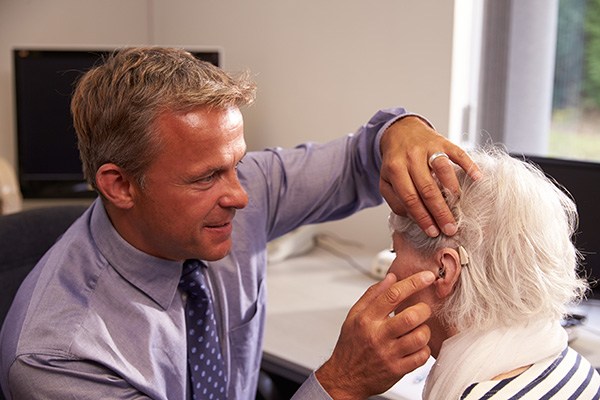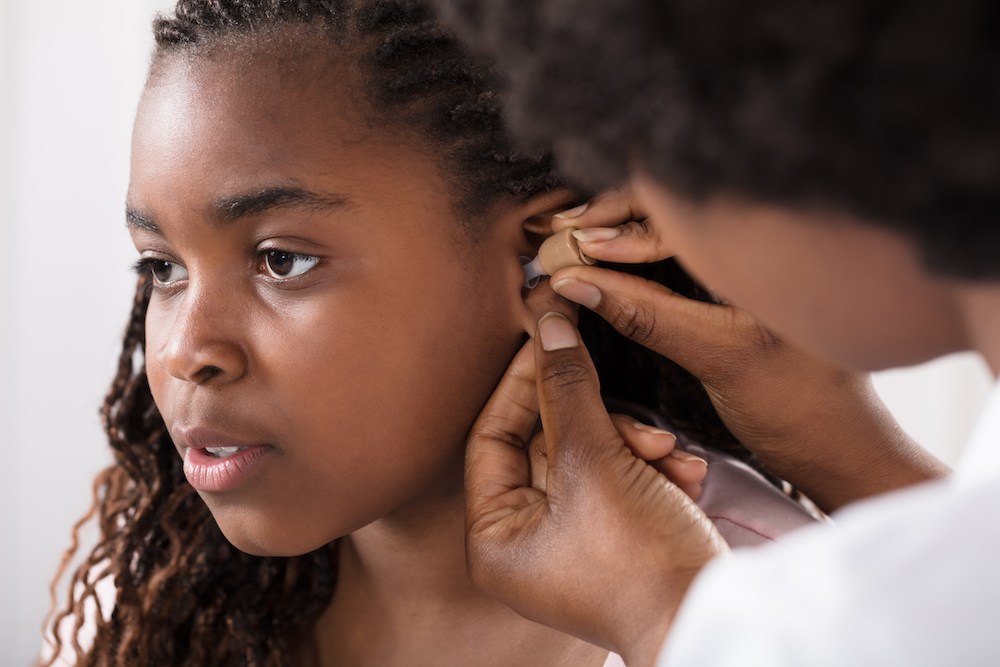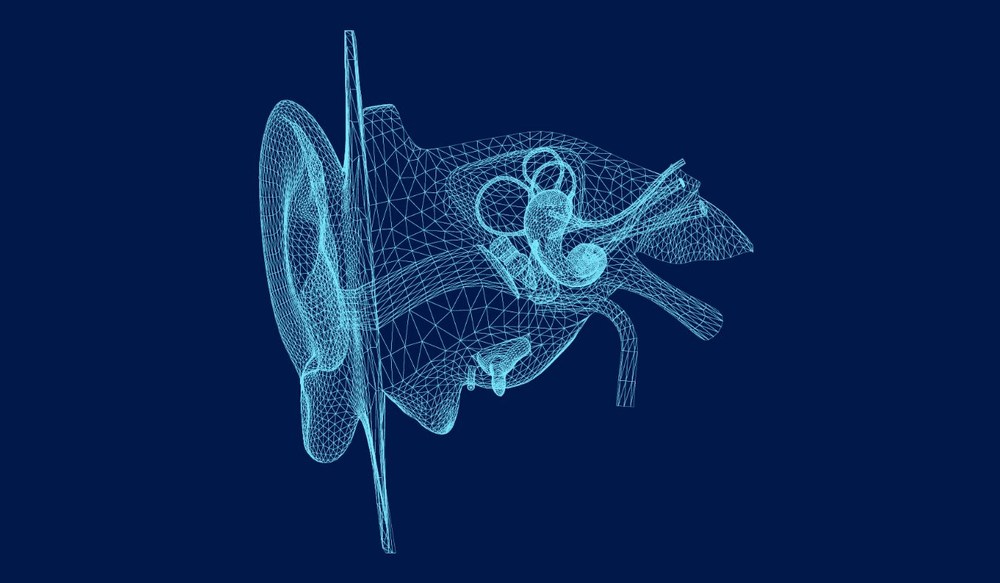The Future of Hearing Aid Personalization
Hearing aids have come a long way from the one-size-fits-all approach of

By: admin | August 28, 2024
Hearing aids are always advancing. You may have heard of ‘earprints’, the unique physical characteristics of a person’s ear, similar to fingerprints. But don’t be mistaken, this doesn’t mean that hearing aids will be customized only based on these earprints.
The physical fit of a hearing aid matters for comfort and sound quality, but it’s only one part of the customization process. The real difference is made by tailoring not just the fit, but also the technology within the device to your specific type and degree of hearing loss. So, while earprints might be a part of future developments, they won’t be the only factor in customizing your hearing aid.
This understanding shines a light on how detailed and personalized modern hearing care has become. Audiologists don’t just provide one-size-fits-all solutions; they work closely with you to ensure your treatment fits your individual needs perfectly. This approach ensures that every aspect – from physical comfort to optimal sound enhancement – is in line with what you need for a better auditory experience.
The personalization of hearing aids isn’t new. It’s a process that has developed over time, with technology advancements playing a significant role. From the initial stages of determining your specific type and degree of hearing loss, to selecting and programming the right device for you, every step is tailored to meet your unique needs. This level of customization goes beyond just the physical fit; it also involves adjusting the device’s features and settings to match your lifestyle and listening environments.
Choosing the right hearing aid is a personal journey. It’s about finding a device that not only helps you hear better but also feels comfortable and natural. There are several types of hearing aids available, each with its own unique features and benefits.
Choosing the ideal hearing aid involves a careful consideration of several factors. The severity of your hearing loss will significantly influence the type of hearing aid that’s most suitable. For mild to moderate hearing loss, smaller, less noticeable options like in-the-canal (ITC) or in-the-ear (ITE) devices may be preferred. However, for more severe hearing loss, larger behind-the-ear (BTE) devices often offer better amplification and additional features.
Your lifestyle also plays a crucial role. If you’re frequently in noisy environments, a hearing aid with advanced noise reduction technology might be beneficial. For those who are active and enjoy outdoor activities, durability and water resistance are important considerations.
Ultimately, the best hearing aid for you is the one that feels comfortable, natural and meets your specific needs. An audiologist can help you assess your hearing loss, discuss your lifestyle and recommend the most suitable options. By working together, you can find a hearing solution that improves your quality of life.
Your ear is as unique as you are. This uniqueness extends beyond its physical shape and size to include how you perceive sound. The concept of earprints has led to significant changes in hearing aid design, ensuring a more personalized fit for every wearer.
To understand the impact of earprints on hearing aid design, consider the following:
In the digital era, continuously-evolving technology has become significant in hearing aid customization. With the advent of digital technology, the personalization of hearing aids has taken a leap forward.
Advanced features like directional microphones, noise reduction algorithms and wireless connectivity have made it possible for audiologists to fine-tune devices with unprecedented precision. Directional microphones can isolate sounds from specific directions, enhancing clarity in noisy environments. Noise reduction algorithms work to minimize background noise, making it easier to hear conversations and other desired sounds. Wireless connectivity allows hearing aids to seamlessly integrate with smartphones, televisions and other devices, providing a more convenient and immersive listening experience.
This level of customization ensures that hearing aids adapt seamlessly to different listening environments. Whether you’re in a bustling restaurant, a quiet library or attending a concert, your hearing aids can be adjusted to provide optimal performance. The result is a more natural and enjoyable listening experience that can significantly improve your quality of life.
Have you ever considered what makes your hearing loss unique? It’s not just about the level of hearing loss, but also the specific frequencies that are affected.
Your unique hearing loss profile is a complex combination of various factors. It includes the degree of your hearing loss (mild, moderate, severe or profound), the frequencies that are affected (low, mid or high) and whether it affects one or both ears.
Understanding this profile is vital for audiologists. It guides them in choosing and programming a hearing aid that will best address your specific needs and improve your auditory experience.
Ever wondered how audiologists create a treatment plan that is just right for you? It’s a careful process that takes into account many different factors.
The first step in this process involves a comprehensive hearing evaluation. This test helps the audiologist understand the specifics of your hearing loss. They consider elements like the degree and type of your hearing loss, which frequencies are most affected and whether one or both ears are involved.
The specialist also adjusts the device’s settings to match your lifestyle and listening environments. This ensures that your treatment plan is as unique as you are, providing optimal support for your specific auditory needs.
As we continue our discussion, let’s shift our focus to how modern hearing aids are designed to meet your individual needs. It’s not just about addressing your hearing loss; it’s also about enhancing your overall auditory experience.
Modern hearing aids are equipped with advanced features and technologies that can be adjusted to match your unique hearing profile. Here are some ways they cater to individual needs:
Beyond the concept of volume control, we find that modern hearing aids offer much more in terms of sound enhancement. They don’t just amplify all sounds; they’re designed to specifically boost the frequencies where you have hearing loss. This ensures that you hear clearly and comfortably without everything sounding too loud.
In addition, these devices come with noise reduction features. This means they can minimize background noise and help you focus on what’s important – be it a conversation with a loved one or your favorite song on the radio. This is particularly useful in noisy environments like restaurants or busy streets, where distinguishing individual sounds can be difficult.
But that’s not all! Many modern hearing aids also offer wireless connectivity options. You can connect them with other devices like your smartphone or TV for a seamless listening experience. Now, isn’t that something to look forward to?
Hearing aids will be incredibly important to your daily communication, so it’s important to not only get one that you’re comfortable with, but also one that is comfortable to wear! Your unique hearing loss profile, lifestyle needs and personal preferences all play significant parts in determining your perfect device.
At Hear Here, we get the importance of finding your perfect match. If you’re ready to take the plunge and find the right technology for your unique needs, give us a call at our St Petersburg, FL location at (727) 289-1212. Achieving an optimal auditory experience goes beyond merely addressing your hearing loss; it’s about enhancing your overall listening experience with a device that fits seamlessly into your life. We look forward to assisting you on this journey towards improved auditory health.

Hearing aids have come a long way from the one-size-fits-all approach of
By: admin | October 20, 2025

You use your hearing constantly throughout the day, often without
By: admin | July 29, 2025

Allergy season brings familiar symptoms like sneezing, watery eyes and
By: admin | June 20, 2025
